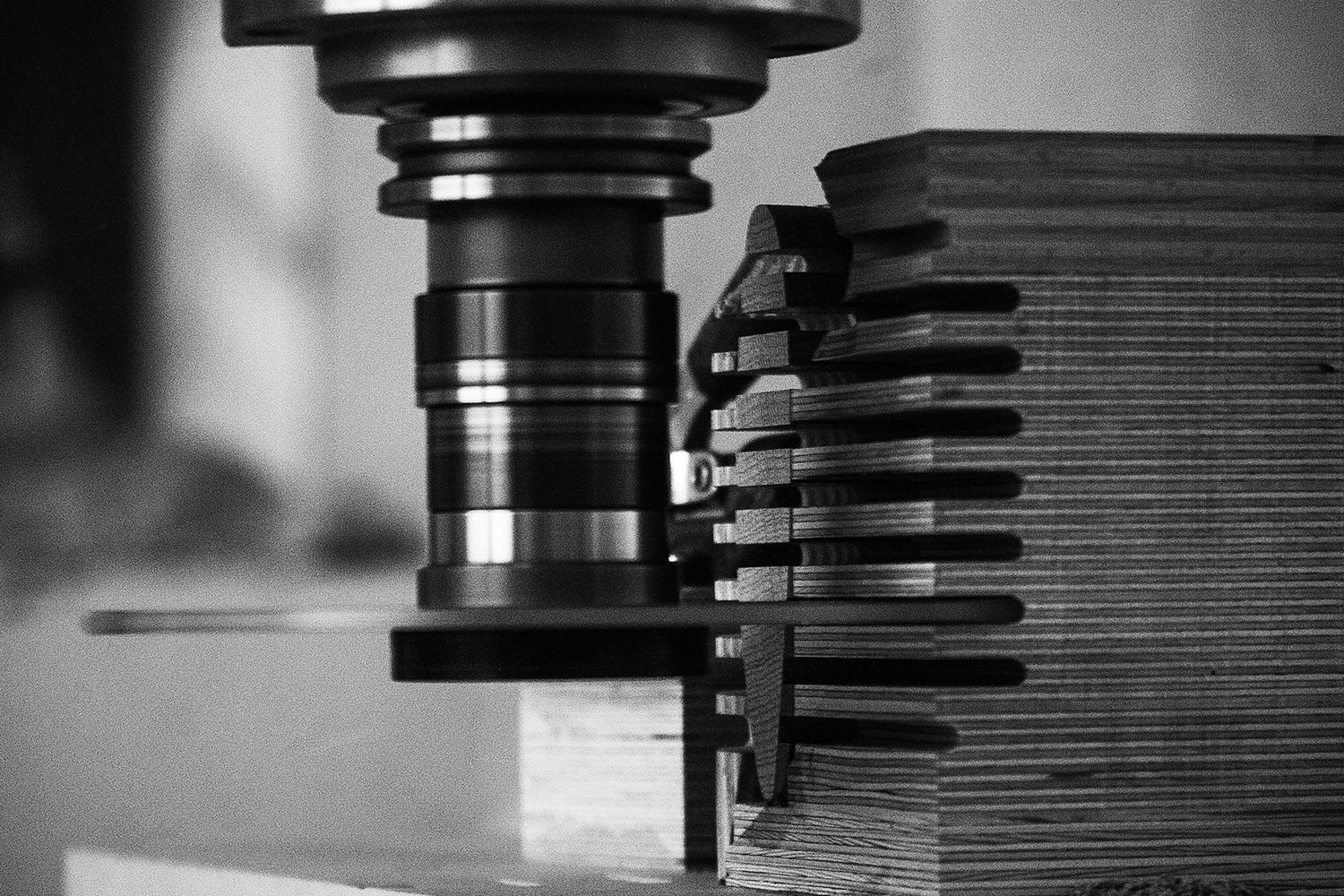
With an objective to reach the highest possible quality of furniture production, machinery is inevitable. Consistent interpretation of the design and accurate advanced joinery requires machinery, and technology can help a skilled craftsman to master the processing of wood with results unachievable by pure manual work.
Today our workshop is equipped with state of the art technology employing sophisticated techniques. Our criteria for implementing new technology have always been very clear. We will only adopt it if it will improve the quality of our product.
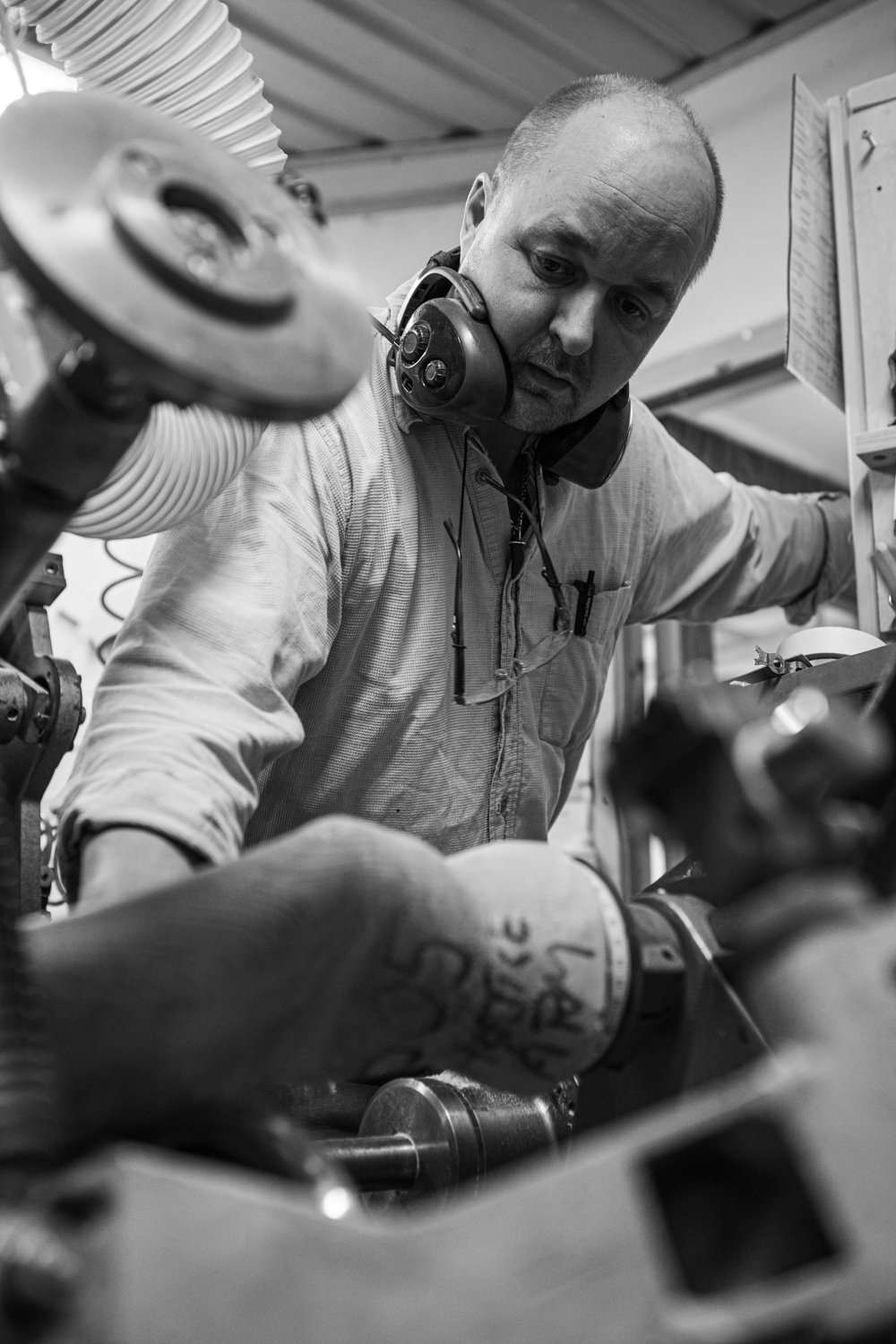
Each craftsman is a decisive part of our production because only the experience of hands that have touched and worked with the materials will understand how to make responsible evaluations of the challenges arising when working with natural materials.
At PP Møbler we see technology as enhancing the craftsman’s field of skill. It is critical for us to place the maximum insight and responsibility with each individual craftsman and provide them with a context within which they can explore a specific field of expertise.
In this way, we can ensure that our future craftsmen will be much more capable than those of the past.
In the 1950’s and 60’s when the Round Chair were made at Johannes Hansen’s workshop the shaping had to be done by hand starting with just a raw cut piece of wood. This resulted in many different ‘versions’, some of which varied significantly from the original design both in terms of shape, strength and comfort.
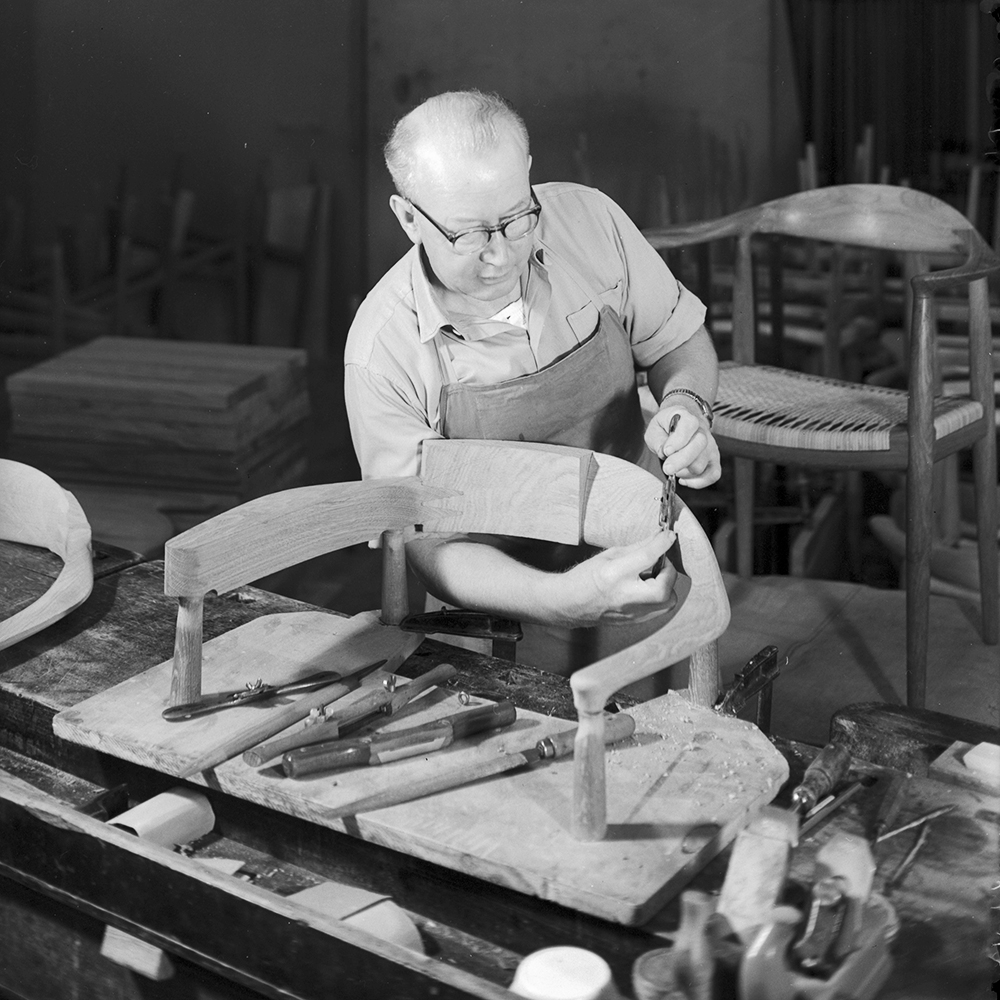

At PP Møbler we take very seriously the subtle details in the organic shapes of Wegner’s finest designs. By following the shape of a template, machining and replicating it in wood, we are able to bring these extremely challenging designs closer to the ideas of Wegner and keep a consistent quality in line with his original vision.
Moulding is a method where glued wooden slats or veneer are secured in a mould and pressed into the desired shape under great pressure (the method is also known as lamination). By moulding it is possible to give shape to very large items. One may carry out highly complex bending by this technique. The only limitation is the size of the mould and the properties of the wood itself.
One example of moulding in PP møbler’s production is the Circle Chair. For its construction, Søren Holst Pedersen and master journeyman Henry Fisker created a machine where thin pieces of wood are run through a glue roller and then buckled and shaped in a mould. Subsequently, the special glue is hardened by microwaves created by a high-frequency electrical power field.
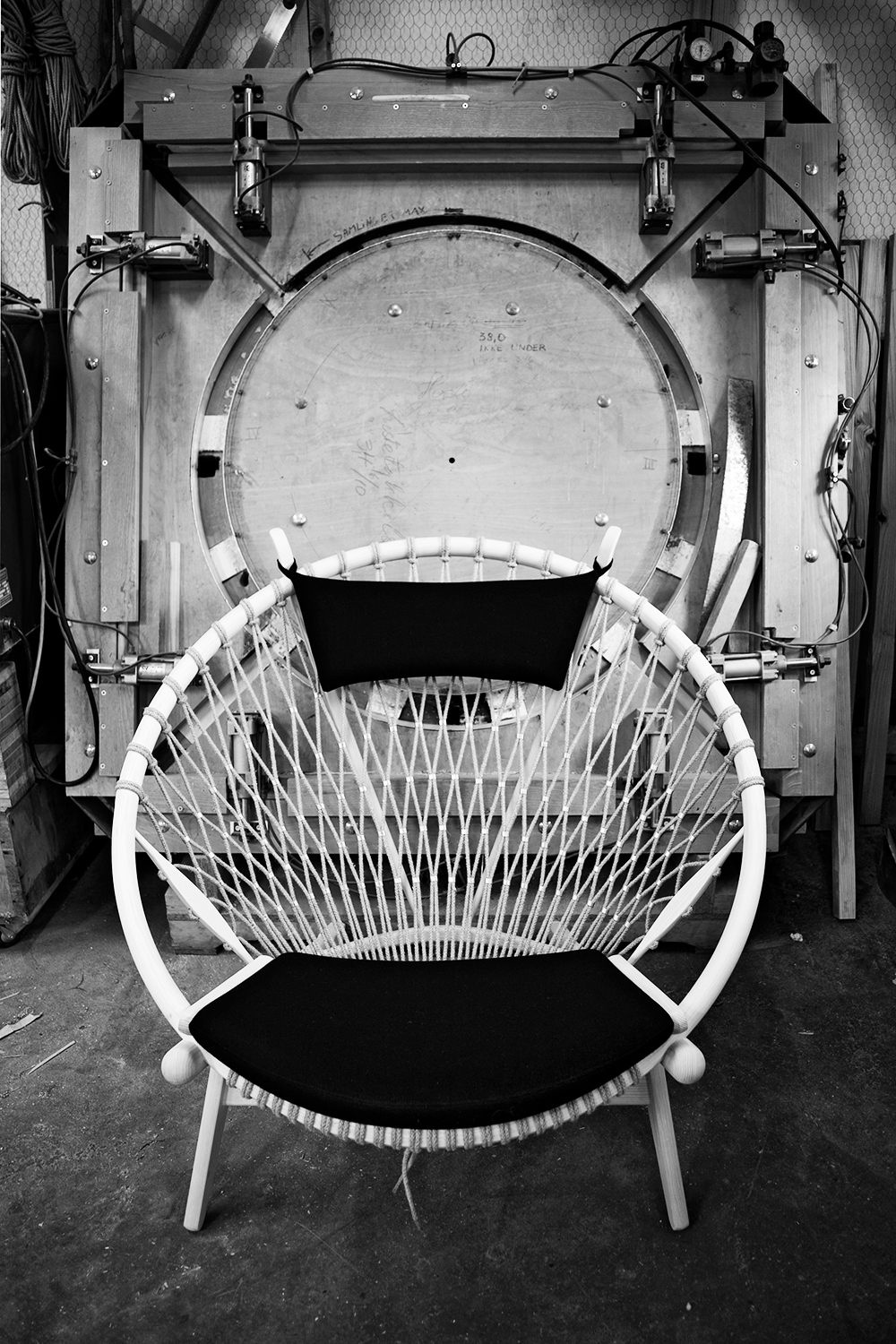
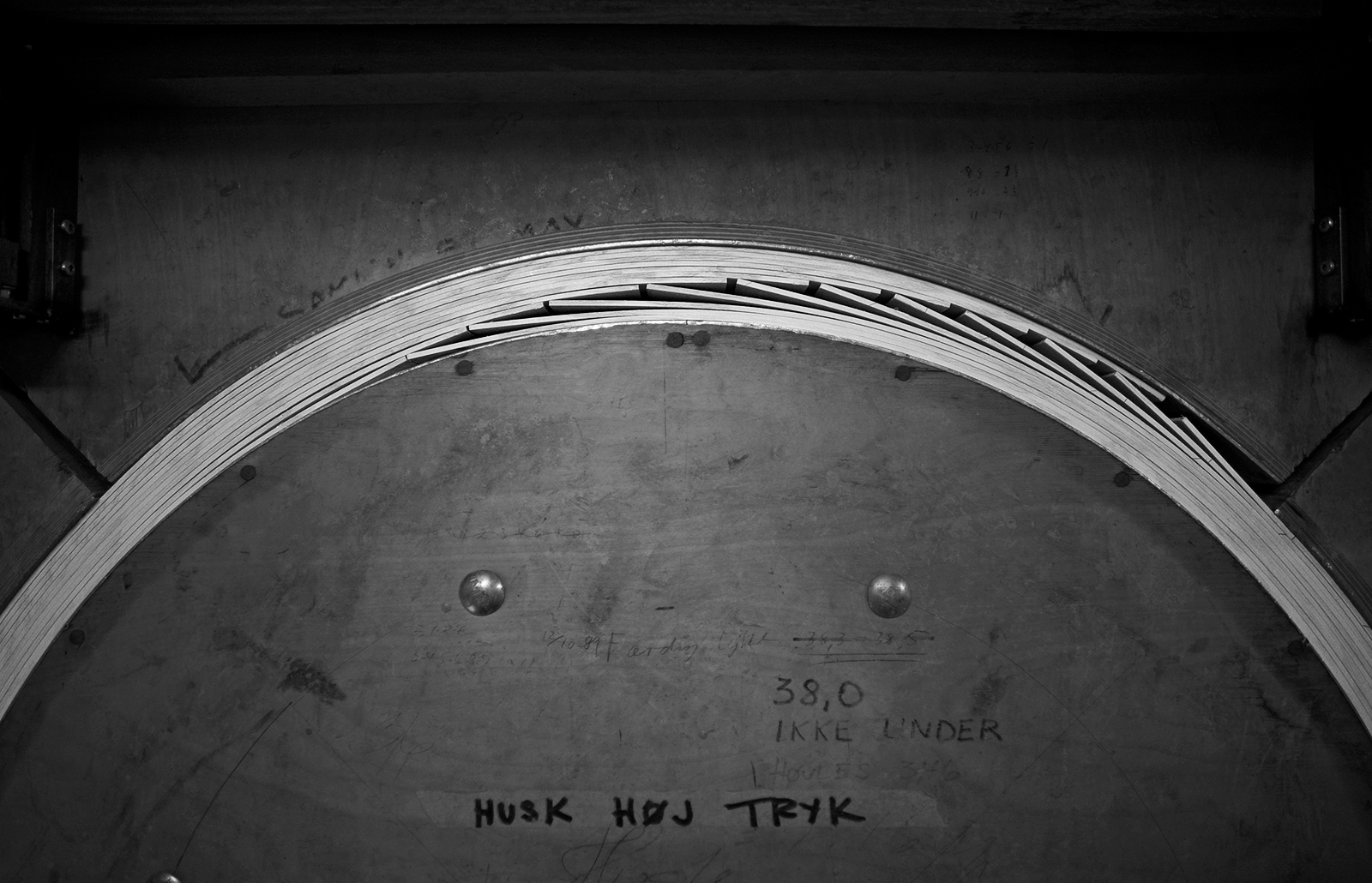
Gluing layers of veneer makes it possible to produce large curved constructions that are light and strong. At PP Møbler we use this technique for making the seats for upholstery.
In the 1940’s and 50’s leading designers like Ray & Charles Eames, Alvar Alto and Arne Jacobsen created some highly innovative and iconic chairs exploring the potential of this technique. They all had to comply with the limitation that veneer, like paper, can only be bent in one direction at a time. It is by principle impossible to make a double bent shell made of veneer.
Wegner challenged this principle in 1954, when he created the Tub Chair. The concept of the back shell was daring and at that time it was impossible to produce and only a few prototypes were made.
In 2003 the 3D veneer technique was introduced. By slicing up the veneer into 1 millimetre wide strips it is now possible to bend wood shells in two directions. The Tub Chair finally made it into production in 2014.
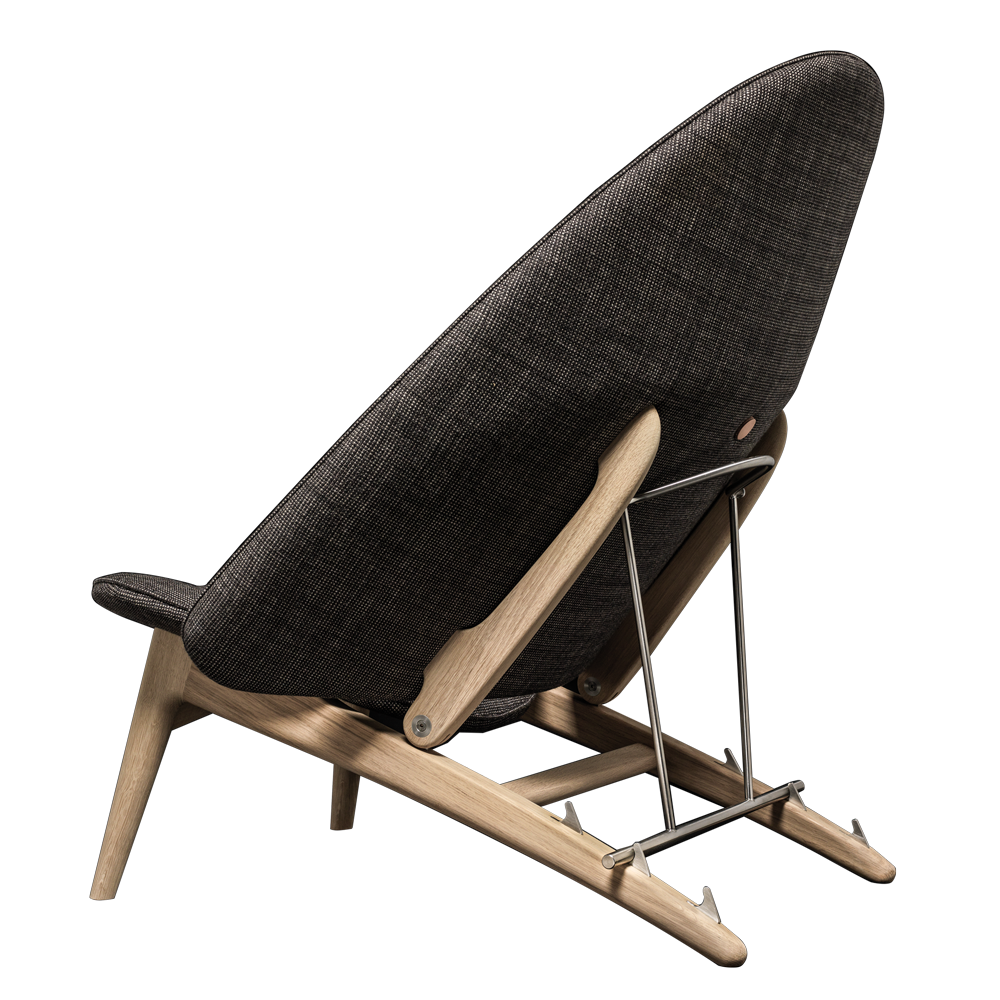
Steam bending is a method for bending solid pieces of wood. It’s an old technique originally used for making ships and today to some extent for making furniture.
When steam bendng the wood is softened with water steam and then bended while still warm. The steam makes the wood cells receptive to the force applied in the bending process. Instead of breaking, the wood cells will compress like an accordion.
The bended wood is fixed in a jig or mould and dryed, whereafter will regain stability. When done successfully the wood will not change appearance.
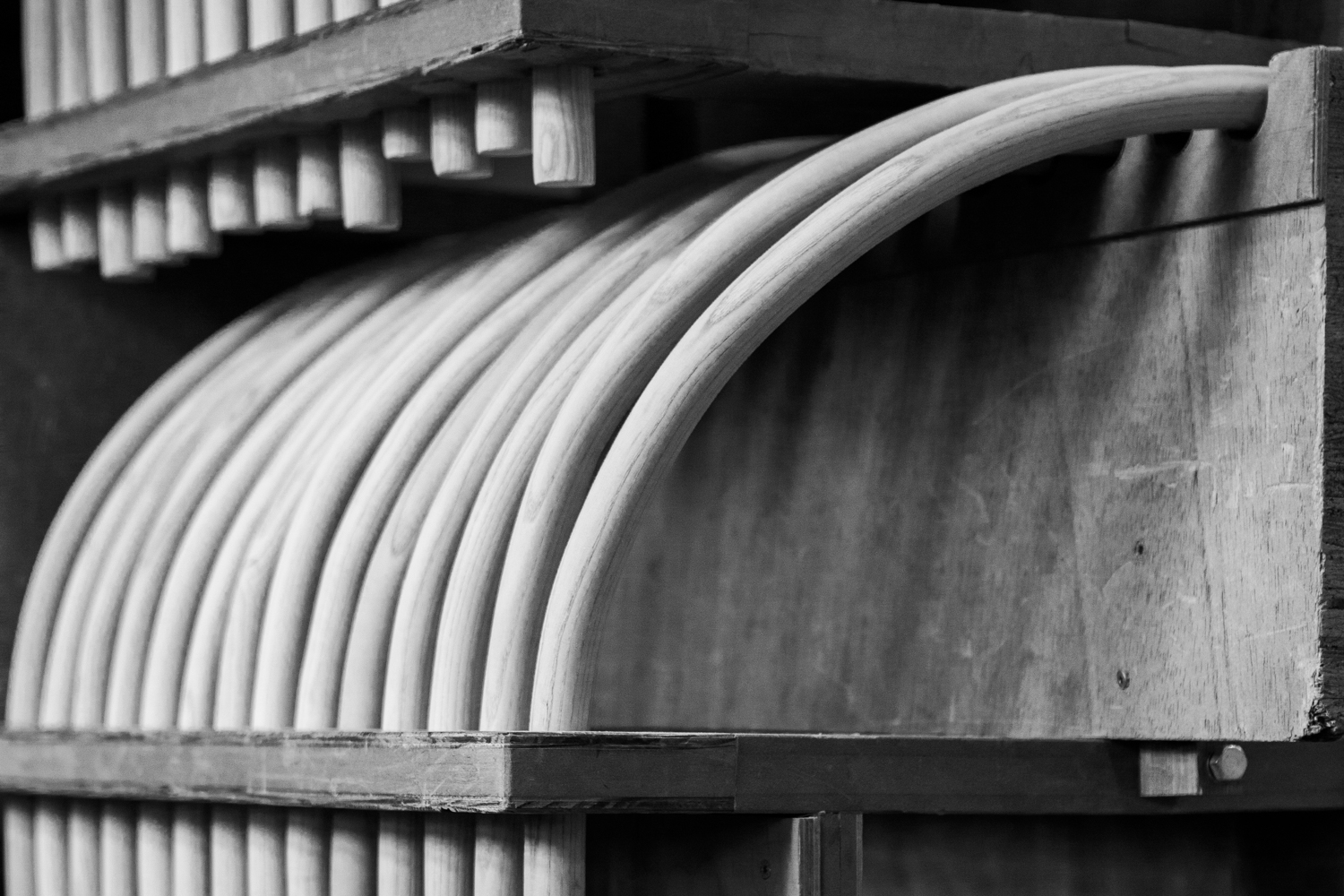
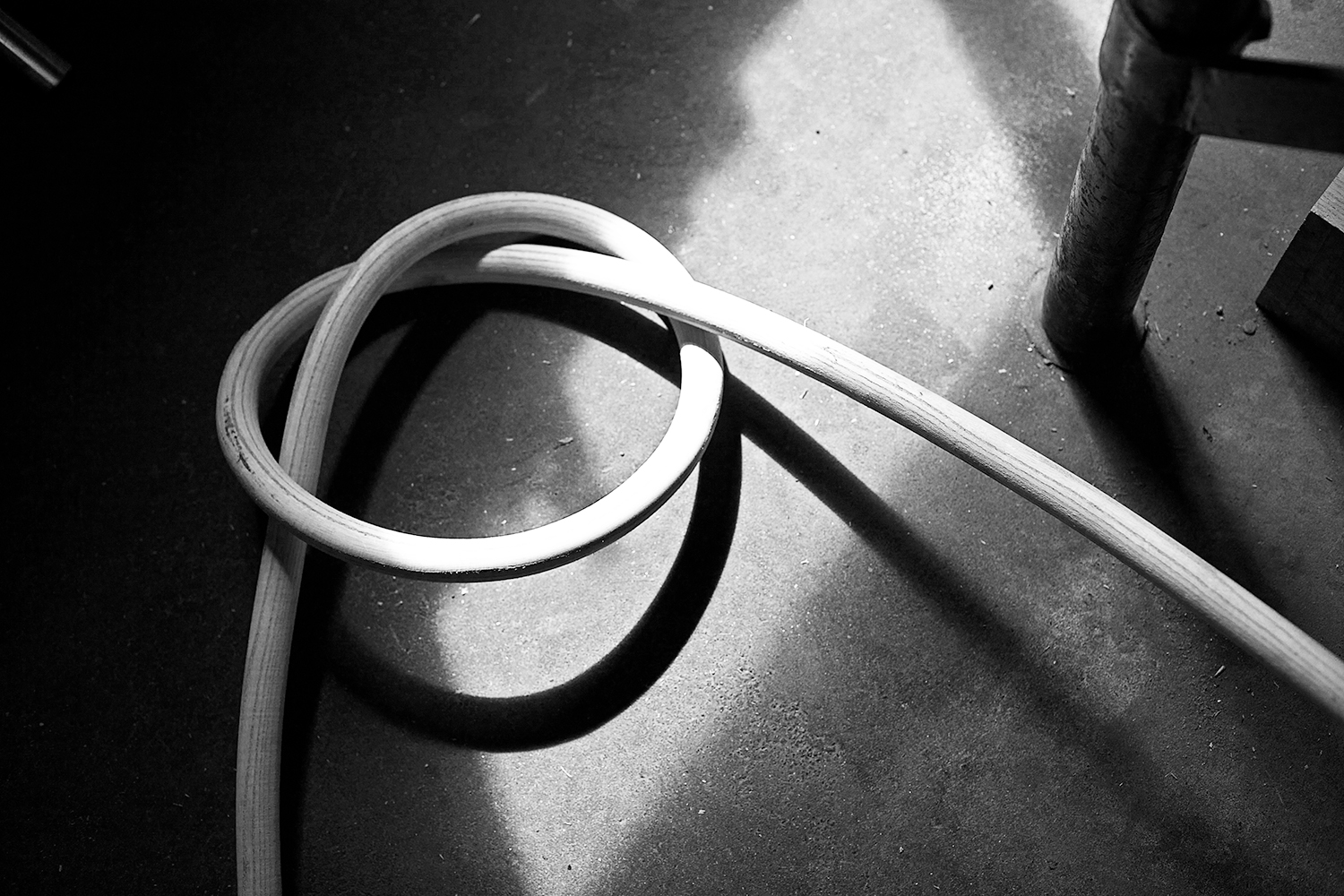
Around 1990 Danish engineers and wood technicians developed a concept for machinery that would compress the cells in a piece of wood before actually bending it. The concept is called pre-compression and was immediately adapted at PP and made it possible to make more complicated bends.
With pre-compression we can compress a length of solid wood up to about 30%. The wood will then be so bendable that you can tie a knot with your bare hands.
The most cutting edge piece of technology at PP Møbler is the custom built five axis milling robot, the CNC machine (Computer Navigation Control). The robot is capable of moving and orienting freely and extremely accurately in three dimensional space. It is
astoundingly flexible and accommodates the integration of many different tools.
At PP CNC machines are used primarily for cutting joints. Because of the extreme accuracy of the machines even the most demanding joints can be cut with perfection. CNC machines are also to some extent used for rough shaping.
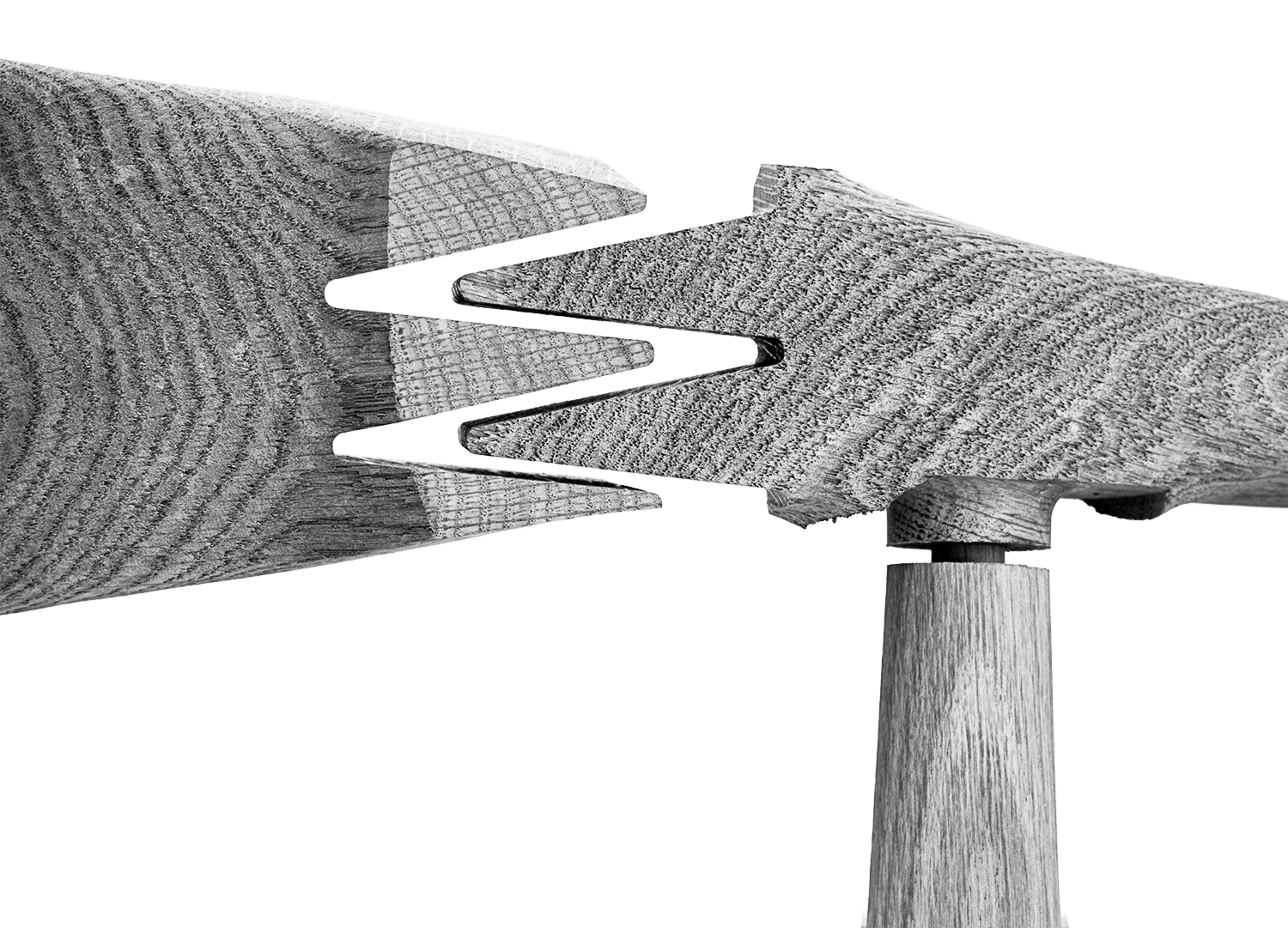
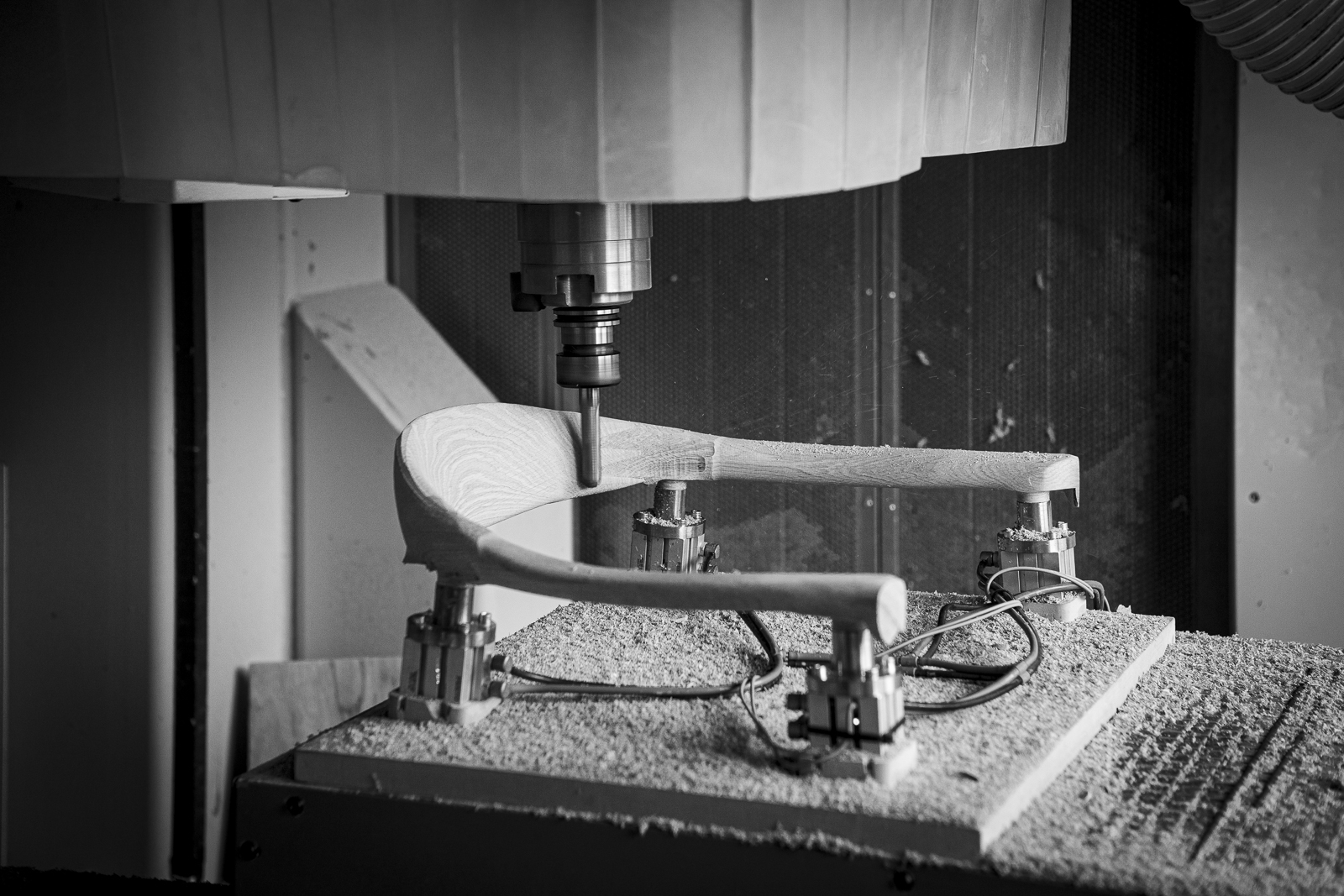
The first CNC machine was installed in 2001, and Wegner followed closely the first years of implementing the new CNC technology. Wegner expressed great interest in the machine, and when he saw it for the first time he exclaimed, “Wow – wish I’d had one of those!”
When the CNC machine was programmed to cut the joint for the back of the Round Chair it did so with unprecedented precision. The two old friends Wegner and Ejnar Pedersen were so astonished that they sat for half a day just watching the younger generations working with the machine.
Hans J. Wegner